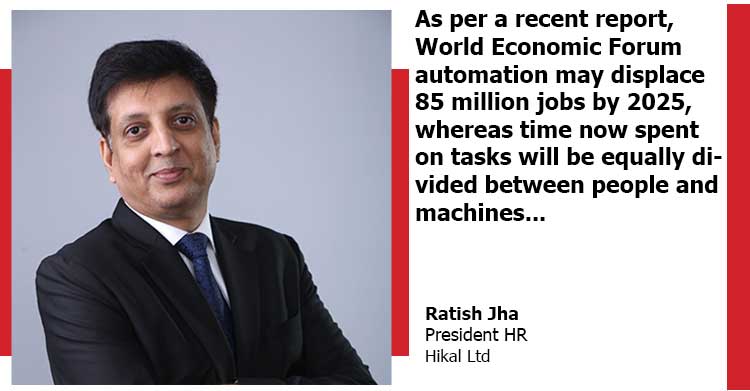Significance of Learning and Development in the modern workplace | Ratish Jha | President HR | Hikal Ltd

The modern workplace is in a constant state of evolution. With rapid advancements in technology, changing business needs, and shifting workforce demographics, organizations must continually adapt to remain competitive. As per a recent report, World Economic Forum automation may displace 85 million jobs by 2025, whereas time now spent on tasks will be equally divided between people and machines. Given this, workforce roles will change and so will the skills needed to perform them. Learning & Development (L&D) will play a critical role in preparing employees for change, upskilling them to remain relevant in the workforce, and cultivating a culture of learning within the organization.
LinkedIn’s 2023 workplace learning report makes the case for emphasizing learning and development, noting that 89% of learning and development professionals believe proactively building employee skills will help navigate the evolving future of work. While skill sets for jobs have changed by about 25% since 2015, that number will double by 2027, according to the report. Future-proofing employees through learning and development is a crucial strategy for organizations to ensure their workforce is equipped with the necessary skills and knowledge to meet the demands of a constantly changing business environment.
Understanding that L&D involves much more than just providing training for the workforce is crucial for organizations that are working to upskill and reskill employees. Creating a culture of continuous learning that emphasizes the importance of coaching, feedback, leadership, and responsibility is essentially the goal.
Establishing this culture takes time and entails for significant adjustments to both procedures and attitudes. To future proof employees, it’s essential to understand what skills will be required in the future. Identifying the gaps in employees’ skills can help to develop targeted training and development programs to upskill them. Organizations can conduct a skills gap analysis to identify the areas where employees need improvement.
Learning and development initiatives can improve employees’ skills, knowledge, and job satisfaction, leading to increased productivity and better performance. By investing in employee development, organizations can create a more efficient, effective workforce that can drive business growth.
Employees want to work for organizations that value and invest in their professional growth. LinkedIn’s 2023 workplace learning report found 93% of organizations are concerned about retention. At the same time, providing more learning opportunities is the top way companies are working to improve retention.
With technological advancements and changes in the market, businesses need to adapt quickly to stay competitive. A well-designed learning and development program can help ensure employees have the necessary skills to respond to these changes and drive the business forward. The rapid pace of technological change means that employees need to stay up to date with new tools and software.
Organizations can provide technology training and resources to help employees stay current with new technologies and processes. Learning and development can encourage a culture of continuous improvement, where employees are constantly learning and looking for ways to improve their performance. Encouraging collaboration and knowledge sharing between employees can help to build a more resilient workforce. This can be achieved by providing opportunities for employees to work together, share knowledge and ideas, and learn from each other. This can lead to a more engaged workforce, a stronger sense of ownership, and a greater commitment to the organization’s success.
According to Right Management, a talent and career management consulting firm, it costs nearly three times an employee’s salary to replace someone, which includes recruitment, severance, lost productivity, and lost opportunities. By developing a highly skilled and motivated workforce, organizations can improve profitability and competitiveness. Learning and development initiatives can help organizations reduce costs, increase revenue, and ultimately drive greater profitability.
In today’s job market, employees are looking for more than just a paycheck. When a company makes a purposeful and necessary investment in learning and development, all stakeholders benefit. This is particularly true when a company has an empowering leadership team that effectively communicates a strong vision for where the organization is heading and how learning and development efforts will contribute to its success.
In conclusion, investing in learning and development to future-proof employees is a win-win situation for both organizations and their employees. Organizations benefit from having a skilled and knowledgeable workforce that can adapt to changing business environments, while employees benefit from having the opportunity to learn and develop new skills that can enhance their career prospects.



Very nicely articulated. In today’s Era where demand of skills are different from the past one. We must upgrade ourselves according to demand and changes required as per profile. Environment was changing continuously but pandemic made this change faster that ever. So many things needs to first unlearn and then learn the new things. Good Article.